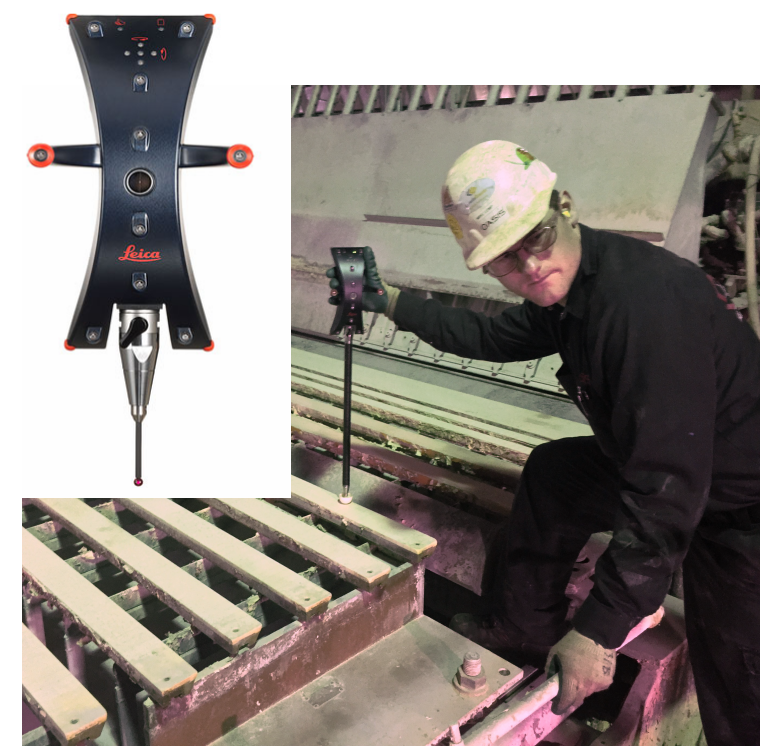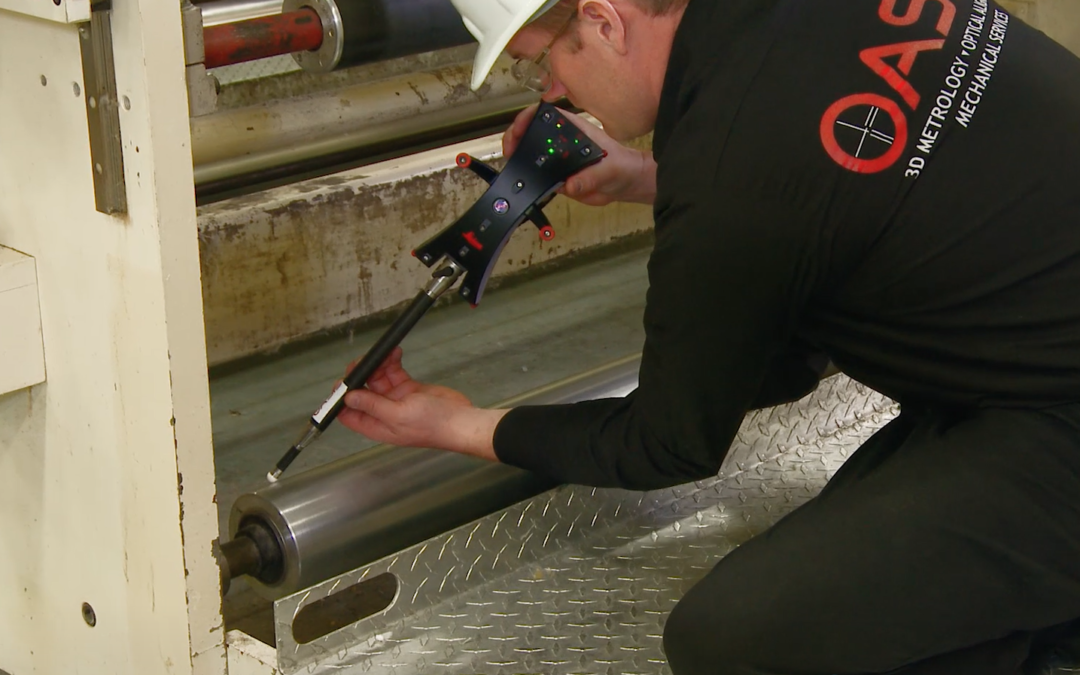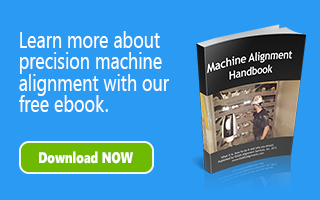In previous posts, we have discussed the many ways customers benefit from OASIS owning and using the most advanced metrology tools available today, specifically our fleet of Leica AT960 laser trackers from Hexagon Manufacturing Intelligence. When discussing the capabilities of our laser trackers, we often mention how using the Leica T-Probe in conjunction with the AT960 provides us with 6DoF (Six Degrees of Freedom) measuring ability as well as flexibility that was not possible in prior generations of laser trackers. In this post, we place the spotlight on the T-Probe itself and provide you with a more in-depth look at how this innovative tool works and how it has changed the way we gather precise measurements in industrial settings.

Example of a Leica 1.5″ retroreflective target
Leica T-Probe
Traditionally, laser trackers have required retroreflective targets, such as spherically mounted retroreflectors (SMRs), to reflect the laser beam back to the laser tracker where it then determines its exact coordinates in 3D space. However, as the use of laser tracker systems expanded, so too did the need for technology beyond reflective targets.
With targets such as SMRs, line of sight is required from the object to the laser tracker. Deep surfaces, hard to reach places, or areas where no direct line of site exists are extremely difficult to inspect and often involve multiple moves of the tracker, or they are unable to be inspected at all. Additionally, because line of sight is a requirement when using an SMR, if the beam is interrupted, the metrology engineer must relocate the beam in order to continue the inspection.
These issues lead to the development of more advanced inspection systems such as handheld scanners and probes that used digital camera and infrared radiation (IR) technology to capture images of the IR LEDs located on the scanner or probe.
The major advancements made by Leica in probing systems, have culminated in today’s T-Probe, a device with advanced capabilities beyond most handheld probes available today.

OASIS metrology engineer uses the Leica T-Probe to capture inspection data in paper mill
How Does the Leica T-Probe Work?
Leica T-Probes function by combining the tracking of a retroreflector with the monitoring of a known pattern of infrared diodes on the probe. When probing a point, the laser tracker calculates the X, Y and Z position of the probe, while a camera calculates the probe’s rotation values of RX, RY and RZ. These combined calculations provide 6DoF (Six Degrees of Freedom) data – an advancement over traditional 3D measurements.
Features & Benefits of the T-Probe
There are many advanced features of the Leica T-Probe used in combination with the AT960 laser tracker that are of great benefit to OASIS metrology engineers, and ultimately of benefit to our customers:
PowerLock – this feature automatically re-establishes interrupted line of sight, allowing metrology engineers to work freely without having to regularly stop and relocate the beam. This is a large time saving benefit, which results in less downtime for our customers.
Handheld technology – with various styli lengths available, the T-Probe can be manipulated to gather data in difficult or hard to reach places without the need for direct line of sight. Based on this advancement, the laser tracker can be set in one position to measure within a spherical volume of up to 40 meters using the T-Probe. Not having to relocate the system is not only a time saver, but also helps to ensure accuracy and data integrity. The T-Probe also has customizable buttons that allow the remote control of the measurement system without any other device.
Other Features
Leica T-Probes are accurate to +/-35 µm with the largest armless operation measurement volume of up to 196’ (Ø) in any dimension. They have a point rate output of 1,000 points per second and a tracking speed of >1 m/s. Additionally, any combination of extensions or styli can be added to the T-Probe adapter, such as a 3 or 6 millimeter ruby, ½” or 1 ½ ” hemispheres, or even a scribe point can be used to touch probe any type of surface.
OASIS metrology engineers rely on the advanced capabilities of our Leica AT960 laser trackers and T-Probes in a variety of industries and for many types of industrial applications. In a future post, we will provide examples of OASIS projects completed using these innovative metrology systems.
If you would like more information on the technologies discussed here and how you can benefit from these metrology solutions, please contact OASIS. Be sure to subscribe to our Industry Blog for regular updates on precision measurement tools and methodologies, case studies and more.

